WHAT IS STEPPED-UP BASIS? DO I WANT THIS?
Before we get there, let’s start with the basics:
What is Capital Gains?
Any time you invest in an asset, you need to pay tax on the profits. That’s called the Capital Gains Tax, and the calculation is real simple – take the price you sold the asset, subtract your “Cost Basis”, and that’s your “Gain”. Your Cost Basis, also known as “Basis”, as the name implies, is the cost of your investment – it’s the price you paid for the investment, plus certain allowable expenses, like brokerage fees.
If you’ve held the property for less than a year, the Gain is taxed as ordinary income, but if you’ve held the property for more than a year, it’s called “Long-Term Capital Gains”, and is taxed at a reduced rate, 0%, 15%, or 20%, depending on your tax bracket.

Are There Any Exceptions?
It wouldn’t be the tax code if there weren’t a whole lot of loopholes and exceptions. But the easiest way to avoid paying Capital Gains tax, is to offset it against Capital Losses. Let’s say you invest in two assets – A and B. Investment A did well, and you have a Gain of $10,000. On the other hand, Investment B took a dive, and you have a loss of $7,000. Well, between the two investments you didn’t do quite as well, and it wouldn’t be fair to tax you on the Gain without acknowledging the loss, so the government lets you net them out – you’ll only be taxed on the $3,000 profit you made overall.
The important thing to remember is that paper Gains and losses don’t count, you actually need to sell the investments for it to count.
You can also do something called a “like-kind exchange”. There are several different sections of the Internal Revenue Code dedicated to different exchanges, but, essentially, you’re trading one investment for another investment of the same kind. For example, if you own an office building, you can sell the office building and acquire a different building within a short period of time, the IRS doesn’t consider it a taxable event. Only certain types of investments qualify for a like-kind exchange, and the rules are complex, so please consult with an attorney who specializes in these kinds of matters before taking any actions.
Qualified Retirement Accounts (IRA, 401k, etc.) and Health Savings Accounts are tax-advantaged, and may have reduced or no taxes, depending on the account. A detailed discussion of all the different types of accounts and their benefits is beyond the scope of this article, and it’s highly recommended that you talk to your financial adviser about your different options.
What About My House?
You do need to pay Capital Gains on your primary residence, but only if you made a significant profit. Your Basis may be higher than you think. The starting cost Basis is the purchase price, not the amount of cash you put down. Certain closing costs can be added to the Basis, and so can the cost of any additions or improvements. Depending on the nature of the damage, the cost of repairs can be added, and some assessments can further increase your Basis.
So, for example, if you bought a home for $400,000, with $80,000 down payment and $320,000 mortgage, your Basis is $400,000. If you then added a kitchen for $50,000, and due to a flood you had to fix the basement for $20,000, your Basis would be $470,000. Ig the house were sold for $500,000, and you received $470,000 after paying a 6% realtor’s commission of $30,000, there would be no Gain.
Additionally, the first $250,000 of Gain for a single person, $500,000 for a married couple, is not taxable. So if a single person owned the home, and it had appreciated to $750,000, there still wouldn’t be any Capital Gains tax on the home.
Now, what is Stepped-Up Basis?
As mentioned before, when you sell an investment, you are taxed on the Gain, which is the difference between the net sales price and your Basis. The higher the Basis, the lower the Gain, and therefore the lower the Capital Gains Tax.
A Stepped-Up Basis allows you to increase the Basis of an investment. The general rule is that if you receive an inheritance due to someone’s death, the Basis is stepped up to the current market value.
For example, if you invested in Apple on January 31st, 1996, the cost was $0.25 per share (after adjusting for stock splits). If you sold the same share on August 30, 2021 for $150.25, you would have a gain of $150.25 – $0.25, or $150. You would then need to pay tax on that gain, which, in the 15% tax bracket would cost $22.50 per share. That might not seem much, but if the investment for a thousand shares, we’d be talking $22,500 tax.
On the other hand, if instead your parent had purchased the share back in 1996, but you inherited the share on August 24 of 2021, the share would get a Stepped-Up Basis of $150.00. When the share is sold on August 30 (a week later) for $150.25, the gain is only $0.25 per share, and the tax would be $0.0375 per share, or $37.50 for a thousand shares. A nice big saving.
So How Do I Get a Stepped-Up Basis on My Investments?
Well…. You don’t. But your heirs do. You see, you can’t get a Stepped-Up Basis on your own investments, only on investments you receive due to someone’s death. You can receive a Stepped-Up Basis on investments you inherit, or you can let your heirs/beneficiaries get a Stepped-Up Basis when you pass away. For many affluent parents, whose needs are already taken care of, the goal is to pass as much wealth to the next generation as you can. Proper Estate-Planning includes ensuring that ensures that your heirs receive a Stepped-Up Basis in as many of your assets as practical.
The Estate Planning Attorneys at Aloia, Roland, Lubell & Morgan, PLLC, can help you with this. Please don’t hesitate to call us at (239) 791-7950 to schedule a free consultation.


